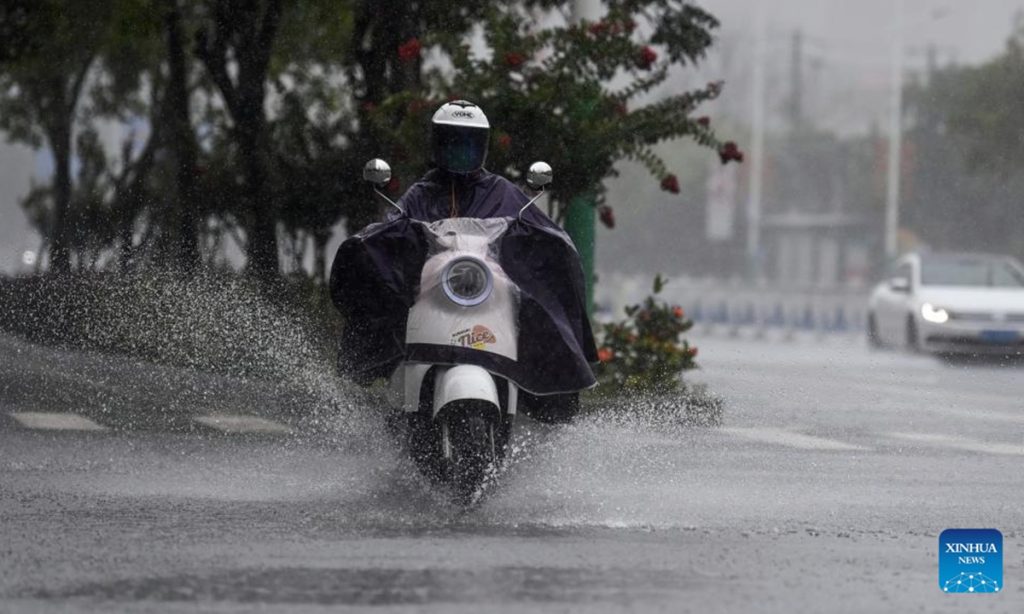PLA Navy’s carrier Shandong formation to visit Hong Kong, marking first public opening

After an eight-year interval, Hong Kong is about to welcome China's second aircraft carrier, the Shandong. This marks the first visit of the Shandong carrier formation to Hong Kong, making the city the only one to host visits of two of China's aircraft carriers and also to hold public open-house events during their stays.
Under the approval of the Central Military Commission, from July 3 to 7, a naval formation consisting of the aircraft carrier Shandong, the guided missile destroyers Yan'an and Zhanjiang, and the guided missile frigate Yuncheng will visit Hong Kong, according to a statement from China's Ministry of National Defense on Saturday.
During this period, a series of open-day visits and cultural exchange activities will be organized to give Hong Kong compatriots a more direct and in-depth understanding of the development of national defense and military modernization in the new era, the Chinese Defense Ministry said.
In July 2017, China's aircraft carrier formation comprising the Liaoning, China's first aircraft carrier, and three escort ships, namely the Yantai, Yinchuan, and Jinan, conducted a five-day visit to Hong Kong. The event sparked a "Liaoning fever" in Hong Kong.
Eight years later, the visit of the Shandong, China's first domestically built aircraft carrier, is expected to also spark a "Shandong fever" in Hong Kong, Zhang Junshe, a Chinese military affairs expert, told the Global Times on Saturday.
According to information released by the Chinese Defense Ministry, the Shandong carrier formation will also conduct a five-day visit to Hong Kong with four vessels. However, compared to the Liaoning's formation, this visit will see new changes.
Zhang said that The Shandong's escort ships, the Type 055 10,000 ton-class destroyer Yan'an, the Type 052D guided missile destroyer Zhanjiang and Type 054A guided missile frigate Yuncheng, all fully domestically developed by China, are a composition that demonstrates the core warships of a modern Chinese carrier formation, and are expected to meet Hong Kong's high public expectations.
Compared to 2017, this carrier formation is even more impressive, said Zhang. "In addition to China's domestically built aircraft carrier Shandong, the accompanying Yan'an is a Type 055 large destroyer - often hailed as the 'sword-bearing guard' of carrier groups. This visit also marks the first public opening of a Type 055 destroyer in Hong Kong," he said.
In 2020, the Nanchang (Hull 101), the first Type 055 destroyer, was commissioned into service. Since then, the family of 10,000 ton-class destroyers has continued to grow. Official reports indicate that the Type 055 destroyer represents the Chinese People's Liberation Army (PLA) Navy's largest-tonnage, most technologically advanced, and most comprehensively capable destroyer in history. Upon its debut, it immediately ranked among the world's top-tier warships."
To date, Hong Kong has witnessed multiple first and exclusive records in hosting Chinese naval vessels. The PLA Navy has consistently chosen Hong Kong as the first public showcase for its newest warship classes, including not only the aircraft carrier Liaoning's first and only public opening, but also the first public opening of the domestically developed Type 075 amphibious assault ship Hainan during its Hong Kong visit from November 21 to 25, 2024.
Opening naval vessels to nationals is a common practice among navies worldwide. Since Hong Kong's return to the motherland, PLA Navy vessels have made multiple port calls to the city, each time welcoming Hong Kong compatriots aboard for tours, Zhang said.
The state-of-the-art surface vessels offer Hong Kong compatriots a tangible showcase of China's national defense and military modernization achievements in the new era. These visits allow them to witness firsthand the strength of the motherland's defense capabilities, thereby enhancing national pride and strengthening patriotic sentiment, Zhang said, noting that during last year's port call by the amphibious assault ship Hainan, many Hong Kong residents expressed enthusiasm for more naval visits - with hopes to see advanced vessels like the Type 055 large destroyers in the future. The upcoming visit by the aircraft carrier Shandong and Type 055 destroyer has indeed warmly fulfilled these expectations.
At the same time, the visit of these cutting-edge warships to Hong Kong, a bridge and window of China's openness to the world, fully demonstrates to the international community both the developmental achievements of China's military and the exemplary professionalism of its naval personnel. In addition, the display of powerful, strategic assets like the aircraft carrier Shandong and the Type 055 10,000 ton-class destroyer also serves as a deterrent to any forces with ill intentions, Zhang said.
"We hope to share with our Hong Kong compatriots the nation's development achievements and progress in national defense and military modernization, while also demonstrating the PLA's capacity to safeguard national sovereignty and security," Zhang said.
Song Zhongping, another Chinese military affairs expert who boarded the Liaoning during the carrier's 2017 Hong Kong visit, told the Global Times on Saturday that there were many Hong Kong residents who applied to tour China's first aircraft carrier. Many of them waved Chinese national flags in their hands.
Speaking with Song about their impressions of the Liaoning, Hong Kong visitors said that they could feel the growing strength of the motherland, and that a mighty PLA means a safe Hong Kong, according to Song.
